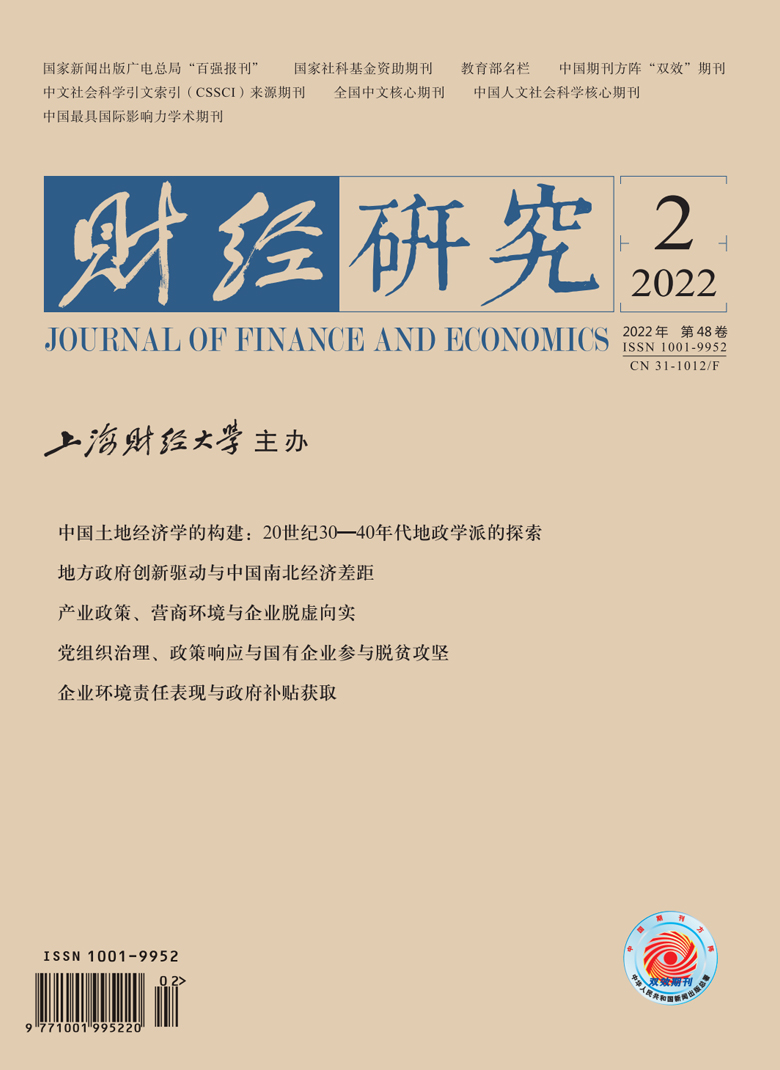尽管健康冲击对家庭金融风险具有显著影响,但现有研究在健康类型、影响程度以及影响机制等方面还存在不同结论。文章基于家庭资产负债表,构建包含财务边际和偿付能力在内的家庭金融脆弱性指标来衡量家庭金融风险,并分析了四种健康冲击对中老年家庭金融脆弱性的影响及传导机制。研究发现:我国中老年家庭金融脆弱性上升趋势明显,而健康冲击进一步加大了中老年家庭金融脆弱性,尤其是中等收入家庭和农村家庭,但不同种类健康冲击对中老年家庭金融脆弱性的影响程度具有显著异质性。其中,重大疾病对中老年家庭金融脆弱性的影响程度是其他健康冲击的4倍。上述效应的传导机制是,健康冲击通过降低家庭收入或增加家庭支出显著提高了中老年家庭金融风险。但不同健康冲击的影响机制存在差异,一般健康冲击主要通过支出增加提高中老年家庭金融风险,而重大疾病通过支出增加和收入减少共同提高中老年家庭金融风险,表明中老年家庭应重点防范重大疾病引发的金融风险。进一步讨论发现,社会医疗保险对提高家庭应对健康风险冲击的作用有限,而商业健康保险可以显著提高家庭偿付能力,弥补社会医疗保险的不足部分,尤其是重大疾病风险。因此,我国应加大税优型商业健康险的优惠力度,放宽健康险的年龄界限,提高家庭商业医疗险的持有量,强化中老年家庭对健康风险冲击的应对能力,进而降低中老年家庭的金融脆弱水平。
动态健康冲击下的中老年家庭金融风险评估
摘要
参考文献
1 丁继红,应美玲,杜在超. 我国农村家庭消费行为研究−基于健康风险与医疗保障视角的分析[J]. 金融研究,2013,(10):154−166.
2 费孝通. 乡土中国[M]. 上海: 上海人民出版社, 2019.
3 高梦滔,姚洋. 健康风险冲击对农户收入的影响[J]. 经济研究,2005,(12):15−25.
4 何兴强,史卫. 健康风险与城镇居民家庭消费[J]. 经济研究,2014,(5):34−48.
8 解垩. 医疗保险与城乡反贫困: 1989−2006[J]. 财经研究,2008,(12):68−83. DOI:10.3969/j.issn.1001-9952.2008.12.006
15 Ampudia M, van Vlokhoven H, Żochowski D. Financial fragility of euro area households[J]. Journal of Financial Stability,2016,27: 250−262. DOI:10.1016/j.jfs.2016.02.003
16 Benjamin D, Brandt L, Fan J Z. Ceaseless toil? Health and labor supply of the elderly in rural China[R]. William Davidson Institute Working Paper No. 579, 2003.
18 Bernheim B D, Forni L, Gokhale J, et al. The mismatch between life insurance holdings and financial vulnerabilities: Evidence from the health and retirement study[J]. American Economic Review,2003,93(1): 354−365. DOI:10.1257/000282803321455340
19 Breslaw J A, Stelcner M. The effect of health on the labor force behavior of elderly men in Canada[J]. Journal of Human Resources,1987,22(4): 490−517. DOI:10.2307/145694
20 Cai L X, Kalb G. Health status and labour force participation: Evidence from Australia[J]. Health Economics,2006,15(3): 241−261. DOI:10.1002/hec.1053
21 Campbell J Y. Household finance[J]. The Journal of Finance,2006,61(4): 1553−1604. DOI:10.1111/j.1540-6261.2006.00883.x
22 Coile C C. Health shocks and couples’ labor supply decisions[R]. NBER Working Paper No. 10810, 2004.
23 Disney R, Emmerson C, Wakefield M. Ill health and retirement in Britain: A panel data based analysis[J]. Journal of Health Economics,2006,25(4): 621−649. DOI:10.1016/j.jhealeco.2005.05.004
24 French E, Jones J B. The effects of health insurance and self-insurance on retirement behavior[J]. Econometrica,2011,79(3): 693−732. DOI:10.3982/ECTA7560
25 Gertler P, Gruber J. Insuring consumption against illness[J]. American Economic Review,2002,92(1): 51−70. DOI:10.1257/000282802760015603
26 Hamid S A, Roberts J, Mosley P. Can micro health insurance reduce poverty? Evidence from Bangladesh[J]. Journal of Risk and Insurance,2011,78(1): 57−82. DOI:10.1111/j.1539-6975.2010.01402.x
27 Hugonnier J, Pelgrin F, St-Amour P. Health and (other) asset holdings[J]. The Review of Economic Studies,2013,80(2): 663−710. DOI:10.1093/restud/rds033
28 Ligon E, Schechter L. Measuring vulnerability[J]. The Economic Journal,2003,113(486): C95−C102. DOI:10.1111/1468-0297.00117
29 Lusardi A, Schneider D J, Tufano P. Financially fragile households: Evidence and implications[R]. NBER Working Paper No.17072, 2011.
30 Mansuri G, Healy A. Vulnerability prediction in rural Pakistan[R]. IFPRI-World Bank Conference on Risk and Vulnerability: Estimation and Policy Implications, Washington, DC, 2002.
31 Merton R C. Lifetime portfolio selection under uncertainty: The continuous-time case[J]. The Review of Economics and Statistics,1969,51(3): 247−257. DOI:10.2307/1926560
32 Mete C, Schultz T P. Health and labor force participation of the elderly in Taiwan[R]. Yale University Economic Growth Center Discussion Paper No. 846, 2002.
33 Mian A, Rao K, Sufi A. Household balance sheets, consumption, and the economic slump[J]. The Quarterly Journal of Economics,2013,128(4): 1687−1726. DOI:10.1093/qje/qjt020
34 Mian A, Sufi A. House prices, home equity—based borrowing, and the US household leverage crisis[J]. American Economic Review,2011,101(5): 2132−2156. DOI:10.1257/aer.101.5.2132
35 Mitra S, Palmer M, Mont D, et al. Can households cope with health shocks in Vietnam?[J]. Health Economics,2016,25(7): 888−907. DOI:10.1002/hec.3196
36 Rosen H S, Wu S. Portfolio choice and health status[J]. Journal of Financial Economics,2004,72(3): 457−484. DOI:10.1016/S0304-405X(03)00178-8
37 Schultz T P, Tansel A. Wage and labor supply effects of illness in Côte d'Ivoire and Ghana: Instrumental variable estimates for days disabled[J]. Journal of Development Economics,1997,53(2): 251−286. DOI:10.1016/S0304-3878(97)00025-4
38 Strauss J, Thomas D. Health, nutrition and economic development[J]. Journal of Economic Literature,1998,36(2): 766−817.
39 Townsend R M. Risk and insurance in village India[J]. Econometrica,1994,62(3): 539−591. DOI:10.2307/2951659
40 Wagstaff A, Lindelow M, Jun G, et al. Extending health insurance to the rural population: An impact evaluation of China's new cooperative medical scheme[J]. Journal of Health Economics,2009,28(1): 1−19. DOI:10.1016/j.jhealeco.2008.10.007
41 Yaari M E. Uncertain lifetime, life insurance, and the theory of the consumer[J]. The Review of Economic Studies,1965,32(2): 137−150. DOI:10.2307/2296058
引用本文
张冀, 史晓, 曹杨. 动态健康冲击下的中老年家庭金融风险评估[J]. 财经研究, 2022, 48(2): 153-168.
导出参考文献,格式为:
下一篇:“一带一路”倡议的进口价格效应





 5154
5154  6306
6306

